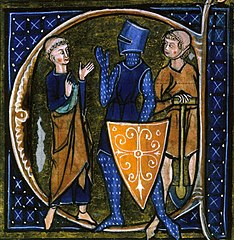The Resurgence of the Gospel, Part Four: The Reconversion of Europe
The Eastern Church
This takes us to the last consideration: the mission of Byzantine Orthodox Christianity. This Christian tradition was distinct in that it encouraged not only the translation of the Bible in the various indigenous languages of the Slavic people groups but also the encouragement of indigenous autonomy. There is no conical hierarchy as exists within the Roman Catholic Church. The Ecumenical Patriarch in Constantinople/Istanbul is honored but is considered as one among equals. The Russian Orthodox Church, the Bulgarian Orthodox Church, the Serbian Orthodox Church, and The Greek Orthodox Church, each are part of a large family of autocephalous [“self headed” or autonomous] Orthodox Churches united only by faith, not by ecclesiastical structure. [Editor’s note: See Pentecostal historian Harold Hunter’s review of the biography of the Ecumenical Patriarch, “Journey with the Orthodox.”]
In ad 862 Prince Rastislav of Greater Moravia (today’s Slovakia and The Czech Republic) made a request that the Patriarch of Constantinople send missionaries into his country to evangelize his Slavic subjects. His motives may have been more political than concern for the people. The letters to Emperor Michael III and Patriarch Photius did state that the people had already rejected paganism and adhere to Christian law. Both Michael III and Patriarch Photius selected a pair of brothers, Cyril and Methodius. In ad 863, with the help of assistants, Cyril and Methodius translated the Bible into Old Church Slavonic and traveled to Great Moravia to begin the process of making it available and to create a Slavic liturgy for worship. German missionaries, representing the Roman Catholic Church in Greater Moravia, opposed the efforts but lost out. Since the Slavic peoples had no alphabet for their spoken language, Cyril and Methodius developed the Glagolithic alphabet to match the specific spoken features of the Slavic language. The alphabet, since known as the Cyrillic, is still used by many languages today including Russian.
The brothers’ accomplishments eventually caught the attention of Pope Adrian II, who formerly authorized the use of the Slavic liturgy. Cyril and Methodius later visited Rome and were warmly received by Pope Nicholas I in 867. Their work in Moravia and elsewhere found support also from the later Pope Adrian II.

The three-part social order of the Middle Ages: those who pray (clerics), those who fight (knights, the nobility), and those who work (peasants and members of the lower middle class). From Li Livres dou Santé, a late 13th century French text.
Image: Wikimedia Commons
The alphabet they invented caught on elsewhere as in Bulgaria, Pannonia, Macedonia, Slovakia, among the Czechs, and the Russians. Soon after Prince Vladimir’s baptism in ad 987, the new Russian Christian worship adopted the Byzantine rite in the Old Church Slavonic language. This was done primarily to remain independent of the Germans and of Rome. The Patriarch in Constantinople appointed an archbishop for Kiev. This determined the course of Russian Christianity and checked the influence of the Roman Latin church in Slavic Eastern Europe even while there was an exchange of legates between Kiev and Rome.
The relationship of the Orthodox Church to the Russian royalty continued a situation which hindered Orthodoxy from the very first when Constantine issued in ad 317 an edict ending persecution of Christians, the meddling of the rulers in the affairs of the church. It was the opposite of what occurred in Western Europe, where the Papacy could exert influence over the political rulers. From the time of Patriarch John Chrysostom in the latter 300’s, there have been occasions when a Patriarch or other church leader had been sent into exile. It is ironic, however, that even when an archbishop or other church leader was exiled because of a falling out with a ruler, they retained their influence and had tremendous impact upon the life of the realm and the expansion of the church.
Category: Church History, Spring 2019


